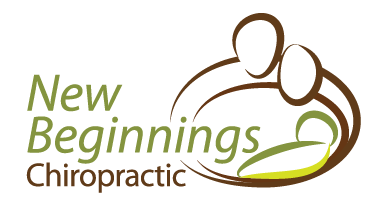Digestion and Elimination Issues
Colic, reflux and constipation are three common difficulties for infants, generally considered to be separate conditions that need to be treated individually. But in reality, the opposite is true. Digestion and elimination are two bodily systems that are directly linked and controlled by the central nervous system.
Pediatric chiropractors recognize that when your infant’s central nervous system is working properly, and the child is being given the proper nutrition, these three nightmares of motherhood can be controlled if not completely eliminated.
Colic
Colic has been defined as excessive, inconsolable crying of the infant, and research has shown that 10-20% of all infants under the age of 4 months suffer from infantile colic. Episodes of colic can happen anytime day or night but will usually begin to follow a pattern.
The general consensus between pediatricians is that colic is caused by excessive gas in the gastrointestinal tract and so their response is, of course, to medicate. The most commonly prescribed medication for the treatment of colic is dimethicone. The side effects of this drug include fatigue, sedation, blurred vision, loss of appetite, constipation, nausea and headache. While this list is certainly reason for pause, the most alarming fact is that the makers of this drug note on their literature that this chemical should not be given to infants under 6 months of age.
Reflux
While most infants will spit up a little after eating, infant reflux or gastro-esophageal reflux (GER) is a whole different matter entirely. It typically happens due to a relaxation of muscles at the bottom of the esophagus and is considered a result of a lack of coordination between the organs of the upper digestive system.
Sometimes the matter being regurgitated is breast milk or formula, but a lot of times it will include stomach acids causing the infant to be extremely distressed due to the discomfort caused to the esophagus.
The highest concern when an infant is suffering from infant reflux is the fear of “failure to thrive”. Since sometimes a large amount of the child’s nutrition is being regurgitated, many parents worry that they aren’t getting enough nutrition. With this concern in mind many pediatricians will immediately prescribe a drug treatment regimen.
Chemical Treatment of Reflux
The drugs most commonly used to treat infantile reflux are H2 blockers such as raniditine, famotidine and nizatidine (also known as Tagamet, Zantac and Pepcid). With all of these chemicals the side effects can include sleepiness, dizziness, rapid or changed heartbeat, diarrhea, nausea, vomiting and trouble breathing. It should also be noted that since this is a prescription that has to be given on a regular basis at specified times, missing doses can also cause irritating and uncomfortable side effects.
The second round of treatment when H2 blockers fail is usually proton pump inhibitors. These include esomeprazole, omeprazole and lansoprazole (also known as Nexium, Prilosec and Prevacid). With these chemicals the side effects can include headache, diarrhea, abnormal heartbeat, rash, dizziness, muscle pain as well as nausea and vomiting. Has it not occurred to them that they’re actually causing what they want to stop?
Constipation
Constipation is generally defined as infrequent or hard stools. Our bodies naturally remove water from the stool while the fecal matter is in the colon, if the fecal matter remains in the colon too long and too much water is removed then the stool mass will be dry and hard. It’s as simple as that.
Generally, a child that has not had a bowel movement in three days or more may be constipated; however, your baby grunting or straining when passing stool isn’t a guaranteed diagnosis.
Typically a pediatrician will recommend either lactulose or a glycerine suppository. The problem with these is that they both have uncomfortable side effects that include diarrhea or cramping.
Current Chiropractic Research
A randomized clinical trial by Wiberg, et. al. studied infants that had been diagnosed with colic and reported that adjustments were proven to be more effective in relieving the infants’ symptoms than the drug dimethicone. In fact, the final results showed that Chiropractic care was 200% more effective than the typically recommended drug therapy.
Another case study by the International Chiropractic Pediatric Association followed 132 infants with colic. In this study, 91% of parents reported their infant improved within one week of beginning care with just two to three adjustments.
The Role of the Nervous System
Since your baby’s digestive and elimination systems are controlled by their central nervous system, a healthy spine is going to be conducive to a healthier infant. When vertebral subluxation is present in the spine it leads to the interference of nerve impulses, which may affect how your infant’s muscles, tissues and organs receive those messages.
Reflux has been attributed to a lack of coordination between the organs of the upper digestive system, and the digestive system is directly controlled by the central nervous system. Many parents report an improved quality of life for their children shortly after beginning Chiropractic care.
In regards to constipation, vertebral subluxation can sometimes be the cause of this discomfort. Parents who have chosen to take their child to a Family Wellness Chiropractor have reported improved bowel function and regular bowel movements with the initiation of a Chiropractic adjustment.
